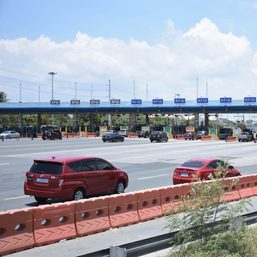SUMMARY
This is AI generated summarization, which may have errors. For context, always refer to the full article.

MANILA, Philippines – The planned P95-billion expressway along Pasig River which drew the ire of a number of environmental and heritage groups is no longer pushing through, San Miguel Corporation (SMC) president and CEO Ramon Ang said.
“Alam mo, ako ‘yung businessman na kapag nakita ko, ayaw ng kababayan natin ‘yung project, hindi ko itutuloy,” Ang said in a briefing on Monday, March 18.
(I’m the type of businessman that when I see that our countrymen don’t like the project, I won’t push through with it.)

The controversial six-lane, 19.4-kilometer Pasig River Expressway (PAREX) was supposed to traverse the entirety of Pasig River, connecting Manila, Mandaluyong, Makati, Pasig, Taguig and Taytay, Rizal.
“Sinasabi [ng] maraming tao na ayaw nila ‘yan…. hindi magandang tingnan or whatever. Narinig mo kung tinuloy ko? Hindi na. Kasi very sensitive din kami. Nakikinig kami sa pulso ng bayan.”
(People said they don’t like it… it doesn’t look good or whatever. Did you hear that I pushed through with it? I did not. We are very sensitive too. We listen to the pulse of the nation.)
Ang earlier said that PAREX would help ease Metro Manila traffic congestion, but various groups and individuals disagreed, saying that it would only negatively impact public mobility, heritage, environment, and public health.
Critics said creating expressways will make traffic congestion worse as it will only encourage people to drive private motor vehicles instead of taking public transportation. This phenomenon, which urban experts called induced demand, only fills newly built expressways with more cars, making it a poor option for mobility.
SMC has conducted several Pasig River clean-up activities as they prepared for the construction. Ang said some 1.2 million tons of waste have been taken out of Pasig River.
Ang announced the discontinuation of the project when he was asked about another matter, particularly the financial viability of the Ninoy Aquino International Airport (NAIA) rehabilitation project. Experts earlier expressed concern over the project funding and how the privatization could impact terminal fees, given that the consortium led by SMC committed to give the government 83% of revenues.
“Hindi naman masyadong importante ‘yung pera (money is not that important),” Ang said.
‘Cancel the permits’
In a statement, environmental group Ilog Pasiglahin welcomed the cancellation of PAREX, but noted that permits need to be formally canceled.
To formally cancel the project, the group called on SMC and the government to do the following:
- revoke PAREX’s Supplemental Toll Operations Agreement with the Toll Regulatory Board
- withdraw the Environmental Compliance Certificate application with the Department of Environment and Natural Resources (DENR)
- scrap permit applications and resolutions with local government units (LGUs).
“We also call on the LGUs of Manila, Makati, Mandaluyong, Taguig, Pasig, and Taytay to reject the PAREX permit applications and listen to their constituents’ vision of a sustainable and inclusive Pasig River,” Ilog Pasiglahin said.
Beyond PAREX, the group urged SMC to cancel the portion of the Southeast Metro Manila Expressway (SEMME) that will be constructed on the easternmost part of the river from Buting, Pasig to Taytay, Rizal, as well as the portion of the Southern Access Link Expressway (SALEX) that will be built around the Manila Bay Port Area, Intramuros, and the Hospicio de San Jose in Manila near the Pasig River.
“The Pasig River is critical to the preservation of our environment and our culture. Whatever happens to the Pasig River also affects its connected bodies of water – Manila Bay, Laguna de Bay, Marikina River, San Juan River, Taguig River, and many others. And any destructive activity in those areas – reclamation, deforestation, and expressway construction – will also affect the Pasig River,” Ilog Pasiglahin said. –Rappler.com
How Pasig River is developed and maintained is a big concern of various groups who want to #MakeManilaLiveable. On Rappler, we have created a dedicated space for stories and reports about liveability in Philippine cities. Learn more about the movement here.
Add a comment
How does this make you feel?




![[Be The Good] PAREX and the power of communities](https://www.rappler.com/tachyon/2024/03/parex-protest-newsletter-mar-21-2024.jpg?resize=257%2C257&crop=275px%2C0px%2C720px%2C720px)









There are no comments yet. Add your comment to start the conversation.